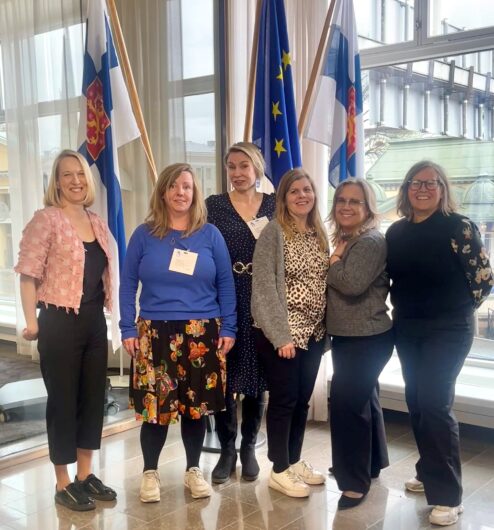The Nordic Network against Trafficking in Children met in Helsinki
The Nordic Network against Trafficking in Children has been operating for over ten years. The network brings together national experts from the Nordic countries who work against human trafficking, with the aim of strengthening child protection and combatting trafficking more effectively.
Last year, the Nordic Network was placed under the Nordic Council of Ministers. In 2025, Finland holds the presidency of the Nordic Council of Ministers and is also responsible for organizing the network’s meetings. The spring meeting was held in Helsinki on May 6, with participants from Sweden, Iceland, and Norway. The meeting proved fruitful, as the participants shared important national updates on child exploitation, violence, and trafficking. The importance of collaboration and mutual information exchange was strongly emphasized.
The network functions as an expert forum, and its meetings are held in English. Each country is represented by 1–3 delegates from the strategic and/or operational level. The NAS has been an active member from the beginning. Finland is represented by Terhi Tafari from the NAS and Marjo Malja from the Ministry of Social Affairs and Health.

Here are the meeting participants: Venla Roth (Finland), Linda Rós Alfreðsdóttir (Iceland), Terhi Tafari (Finland), Yvonne Karlsson (Sweden), Jonna Ålander (Sweden) and Anne Kristine Iván (Norway).
As human trafficking is often a cross-border crime, international cooperation is crucial. The network provides an important platform for sharing knowledge and experiences, strengthening professional cooperation, and developing best practices — especially in the areas of victim identification and child protection. It is also essential to highlight new trends and phenomena that may spread across borders.
According to research, trafficked children are not sufficiently identified. Although they may be in contact with social and health services, their exploitation often goes unnoticed, increasing the risk of continued or repeated victimization. The actual number of victims is likely higher than official statistics indicate, and the forms of exploitation are more diverse than previously understood.